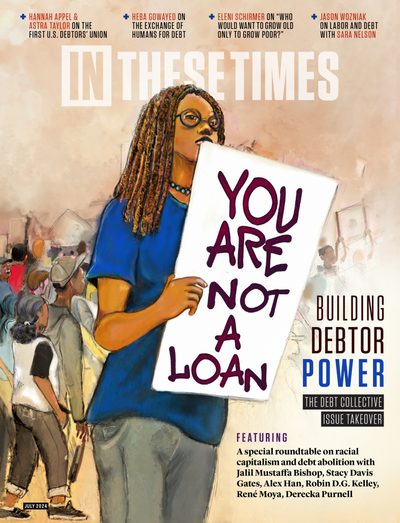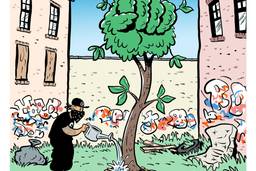Debtor Organizing Can Transform Our Individual Financial Struggles Into a Source of Collective Strength
Alone, our debt is a liability. Together, it’s our leverage.
J. Patrick Patterson

debt•or pow•er
noun
- leverage that springs from an organized association of debtors, often in debt to shared creditors, to negotiate the terms and conditions of debt contracts, including the abolition of unjust debts
- the transformation of individual financial struggles into a source of collective strength by waging strategic campaigns of economic disobedience and debt refusal
- a tool to build reparative public goods using debt as leverage
Is this a new idea?
Collective debt resistance — if not debtors’ unions — has happened for centuries! Ancient Roman plebeians used strikes, demonstrations and periodic exoduses to win a range of concessions from the aristocratic class, including substantial political rights and the elimination of debt slavery. Today, just as organized renters have leverage over their landlords because they owe the same person, collectively withholding payments (or threatening to!) builds collective power to make demands.
But where does the power come from?
A debtors’ union is a newer concept that is still emerging. Debt Collective is in the throes of this experiment, but the provocation is simple: Just as workers have potential collective power over capital in the form of their employer, and tenants in the form of their landlord, debtors can also wield this kind of collective power when they organize against their creditors.
How can we use it once we build it?
Although debtors’ unions are a new, emerging front in the fight against racial capitalism, their potential holds across many types of debt.
The millions of people being crushed by medical debt could organize locally to demand hospitals cancel their bills. Or they could start a national medical debt strike to advance the cause of universal healthcare.
Credit card debtors could rally against usurious lending practices and advocate for a socially productive — as opposed to predatory — system of credit and debt. Student debtors could transform not only the predatory lending that has become synonymous with higher education, but also the landscape of who has access to that higher education in the first place.
And people with debts in the criminal punishment system could organize to challenge fines, fees and other costs associated with incarceration, demanding the abolition of a system that extracts on so many levels. The possibilities for debt resistance campaigns are practically endless.
This is part of “The Big Idea,” a monthly series offering brief introductions to progressive theories, policies, tools and strategies that can help us envision a world beyond capitalism. For recent In These Times coverage of debtor power in action, see, “When transit riders refuse to just sit back,” “LGBT Workers Need Unions, Not Rainbow Capitalism” and “What #MeToo Can Teach the Labor Movement.”
J. Patrick Patterson is the Associate Editor at In These Times. He has previously worked as a politics editor, copy editor, fact-checker and reporter. His writing on economic policies and electoral politics has been published in numerous outlets.









